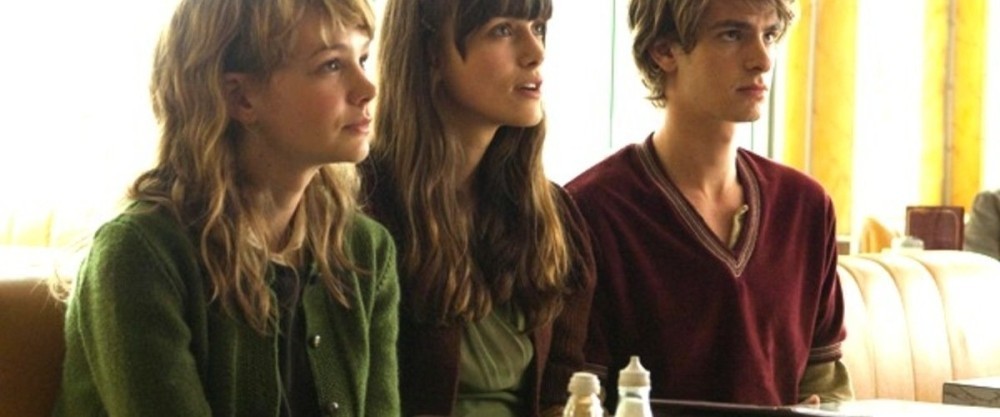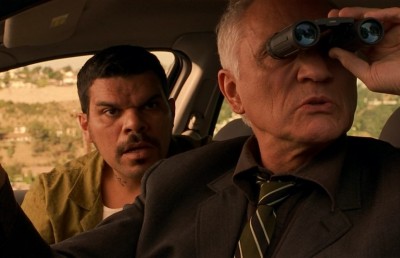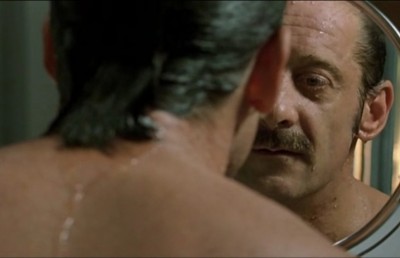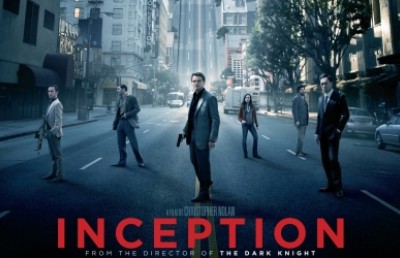The Worth of Children and Their Parts: Never Let Me Go and Inhale
You have to know who and what you are!

Never Let Me Go, directed by Mark Romanek (Fox Searchlight, 2010)

Inhale, directed by Baltasar Kormakur (IFC, 2010)

In 1952, a medical breakthrough; in 1967, human life expectancy expands to 100 years: with those assertions, the film Never Let Me Go commences; and we are introduced to the narrative of a woman in a hospital behind glass, observing a young man being prepared for an operation. He looks anonymous, but by the end of the film, we know that he is far from that for her. The young woman, Kathy, announces that she is someone who helps in the care of others, a carer; it is a job description, but for her, also, a psychological disposition. Carers and donors have achieved so much, but we aren’t machines, Kathy declares; an obvious declaration that—yet—must be made; and the film demonstrates why. It is a sensitive film directed by Mark Romanek, with a screenplay by Alex Garland based on a literary novel by Kazuo Ishiguro, a digressive or indirect meditation on ethics, science, and humanity, a film about human cloning, and children who have been bred for the cultivation of their internal organs.
The young Kathy, Ruth, and Tommy, when they are about twelve, are beautifully played by Isobel Meikle-Small, Ella Purnell, and Charlie Rowe; and the parts are taken over by older actors when the children are eighteen. Carey Mulligan, who starred in An Education and appeared in The Greatest, is featured as Kathy, with Keira Knightley of Pride and Prejudice and The Edge of Love and many other films as Ruth, and Andrew Garfield (Lions for Lambs, The Social Network) as Tommy. Theirs is a story of friendship, love, and betrayal; relationships occurring in very unusual circumstances. Kathy, the carer, remembers her childhood in an institution called Hailsham with Tommy and Ruth; and we see children singing during a public assembly, before the headmistress, Miss Emily (Charlotte Rampling), mentions that several burned cigarettes were found, and that it is worse for Hailsham students to smoke than anyone else, that their internal health is of paramount import. It is one of the hints we are given about the purpose of the school and the children, and we have hints rather than knowledge; our ignorance matches that of the children—an ignorance that is not addressed directly until the students get a new teacher or “guardian” and she observes them and then discusses the predictability of their short lives.
The new guardian, Miss Lucy, sees Tommy (Charlie Rowe) play a ball game and refuse to go beyond a fence to retrieve the ball; and Miss Lucy (Sally Hawkins) questions that and a girl explains that a boy who went beyond bounds was found butchered, and a girl who did so starved beyond the estate’s gates (stories told for discipline, though Ruth believes them: she asks, Who would make up such horrible stories?). Tommy is not particularly good at art or sports, and is teased—and sometimes reacts intensely, standing and screaming; and once when Kathy (Isobel Meikle-Small) goes to comfort him, he turns and accidentally hits her—but later apologizes, saying he would not want to hit any girl, especially not her. The new teacher tells Tommy that art and sports are not that important, something that is puzzling for Tommy and Kathy—especially, as great attention is given to a visiting woman (“Madame”) who helps to select the children’s art for a gallery (however, the visiting woman seems uncomfortable among the children). Of course, art and sports are not of ultimate importance for these children, whose established purpose is elsewhere. Obviously, Kathy and Tommy are beginning to develop a genuine intimacy, and Tommy gives Kathy a music tape containing the song “Never Let Me Go,” and Ruth (Ella Purnell) perceives their growing closeness but puts herself in between them; and it is Ruth and Tommy who become a couple, one of those accidents (or calculations) of relationship that shape a human life.
It is on a rainy day that the new teacher tells the students that they have “been told and not told.” They are being prepared, but it is not clear for what, something that can be true of primary education in various institutions. Miss Lucy (Sally Hawkins) tells them that some children have unknown futures but that their futures are known: “you will start to donate your vital organs—that is what you are created to do.” She tells them that, as she wants their lives to have conscious purpose (“you have to know who and what you are—it’s the only way you’ll lead decent lives”). It is the kind of individual initiative that many institutions find dangerous—empowering the many with knowledge—and the new teacher is fired; and, at a school assembly, the headmistress refers to “deliberate subversion.” Many of the children clap, but Kathy looks sad—she seems to understand something that the other children do not.
At eighteen, Kathy, Ruth, and Tommy, are moved from the institution Hailsham to farm cottages, where other young people like themselves—clones—live. Tommy and Kathy seem friendly, though not romantic. Another couple there imitates lovers seen on television, and Ruth begins to imitate them (when Kathy asks Ruth about that, Ruth insinuates that Kathy is jealous, but Kathy seems to object to the fakery and the discomfort it causes Tommy). It is interesting to think that Kathy has a sense of truth and that Ruth does not; a not uncommon thing, even among friends—a very human thing. They go into town one day, following the rumor that Ruth’s “original,” the one she has been “modeled” on, has been seen there; and they look through the window of an office of busy people, and identify a woman whose hair is as long as Ruth’s hair is, but Ruth does not see a significant likeness in the professional woman and concludes that she, Ruth, and her friends should look in the gutter for their originals, among the junkies and whores.
There is another rumor—that couples in love can get deferrals before their organ donations begin. Kathy says, “There were lots of stories at Hailsham—I don’t think many turned out to be true.” (I wondered if the name of the place might be broken into two words: hail sham.) Tommy (Andrew Garfield) talks to Kathy (Carey Mulligan) about love as cause for a deferral, thinking that the art gallery might have been used to understand their inner life, and as a reference with which to test a declared love, but it is not with Ruth (Keira Knightley) that he would apply (“it wouldn’t work”), but, rather, with Kathy—his first recognition of what Kathy has felt for Tommy, a kind of cruelty, an inadvertent cruelty, that brings tears to her eyes. However, Ruth later tells Kathy that she supposes that Kathy might have thought that Kathy and Tommy formed the more natural couple but that Tommy does not see Kathy that way. Whereas Tommy’s cruelty was unintentional, Ruth’s cruelty seems conscious, even though Ruth ends the conversation with a kiss; and Ruth’s words come after Ruth and Tommy have made love with Tommy avoiding her face—Ruth may suspect Tommy’s growing distance from her.
.jpg)
Kathy (Carrie Mulligan), Ruth (Kiera Knightley) and Tommy (Andrew Garfield)
Carey Mulligan’s performance as Kathy is soulful; and her face is easy to read for what she is thinking and feeling. She is an easily admirable actress, and my only reservation about her talent is whether she will be able to play characters whose natures are not fundamentally aware and responsive. Her face can flush with feeling in a way that is really disarming—but can she withhold feeling? Can she play cruel or stupid, as some characters—and people—are? I think that I liked Keira Knightley from the first time I saw her, and since then I have seen her in enough diverse roles that I know she has depth and range that cannot be predicted. Keira Knightley has a fine beauty, a gift, and she seems to work from both instinct and intellect: she gives what is necessary, what is of illustrative use, and never seems too much one thing or the another—her instinct allows her intellect to be rooted in something natural, and her intellect prevents her instinct from being crude or wild. Here, Knightley is someone who is practical, and not particularly imaginative: not until late in the story does her character attempt a transcendent view. Andrew Garfield is less impressive to me here (the boy who plays the young Tommy is more charming), and Garfield’s adult Tommy is less ingratiating, more melancholy. (I am somewhat amused to think that Garfield seemed more excited to be in a scene with Robert Redford in Lions for Lambs, playing a smart student who is becoming lazy, than Garfield seems with either Mulligan or Knightley, but Never Let Me Go has a more forbidding premise.) It is possible to read Garfield’s performance as a portrait of someone who has been wounded—his light dimmed—by anticipation of his fate.
In Never Let Me Go, Kathy seems to accept the terms of her life and she finds a respectable mission for herself, and volunteers to become a carer, before she and her friends Ruth and Tommy begin to lead separate lives—and it is toward the end of her decade-long career as a carer, helping donors prepare for and recover from operations, that she meets Ruth and Tommy again. Ruth is weak after two operations, and suggests they go for a beach visit, and ask Tommy along (Tommy seems to be doing well, though he has had two operations as well); and on the beach, Kathy, Tommy, and Ruth talk about “completion”—the end of their responsibility, and another word for death, a strange, sad conversation. Ruth apologizes for keeping Kathy and Tommy apart. Ruth admits she was jealous and did not want to be left alone: “It’s the worst thing I ever did.” (Kathy’s face is turned away from Ruth. It is not the separation from Tommy that is the damning thing, but Ruth’s consciousness of her lack of genuine love for him.) Ruth wants to make amends and gives them the address for the woman whom she thinks can help with a donor deferral for the two: Madame (Nathalie Richard), who helped with the art selections at Hailsham. Kathy says it is too late but Tommy is interested, and wants to use the drawings he has done as proof of the nature of his soul. Kathy and Tommy have a brief time together, but that is all. “You poor creatures,” Madame says. Kathy wonders how different their lives have been from those they have existed to help.
It is a film of care and delicacy and also a film of power. Its colorful and melancholy tableaus create a living world of individual and intertwined characters, of society. It is a film about medical science and about love and regret. Its scenes—often of civil conversation—contain elements of cold cruelty, and achieve a consciousness of complexity; and we are compelled to think of what it means when it does not matter who you are, or what you do, as your fate is sealed. There are rhyming scenes: Tommy screaming in frustration as a boy when he is not chosen for a sports team, and as a man when he is refused an organ donation deferral; and Ruth standing in a doorway, first as a girl then as a woman, as Kathy listens to the music that Tommy has given her. Of course, at the beginning and end of the film is Kathy watching a young man being prepared for an operation—and when we first see him, we do now know that the young man is Tommy. By the time we recognize the once anonymous man on the table, being prepared to have a vital organ extracted, we do not doubt his humanity: and the film becomes an enactment of the possibly inexhaustible questions, What does it mean to be human? What is the value of human life?
What is of greater value, the life of an American girl or a Mexican boy? The film Inhale is about desperate American parents who used their contacts and money to find out about organ donations in Mexico, as they need new lungs for their daughter who is dying; and Inhale, directed by Baltasar Kormakur, is one of those motion pictures with a look that alone inspires attention and respect: the locations have a used beauty, a worn beauty, and the cinematography is, somehow, both bleached and dark—an approximation of film noir in color. The father (Dermot Mulroney, his dark hair streaked with white, his handsome face lined) is a prosecutor, who has been working to condemn another father, a Hispanic working class man, who has taken justice into his own hands, crippling a man whom the Hispanic father believes molested his son. The supposed molester—actually a once legally convicted molester, though there is no evidence that he is guilty in the current case—is a witness for the prosecution. The vigilante justice case raises the specter of what parents would do on behalf of their children.
Meanwhile, in another part of town, a young boy is in a fatal accident, and his lungs are available for transplant—but the prosecutor’s daughter is lower on the recipient list than someone in a distant location (the lawyer-father tries to convince a doctor to give the lungs to his daughter, who could be in the hospital in fifteen minutes, rather than risk the long trip to bring the lungs to the other child who needs them; the doctor overseeing the organ removal of the deceased boy refuses—and the lungs die while being transported). His daughter’s own doctor confides that someone they know has gone off the transplant-needed list, and might have found another avenue for an organ, news that is a violation of a patient’s privacy; and the father speaks to that man, and, during a benefit party, the mother goes through the medicine chest of that man, a powerful public figure, and discovers medicines suggesting he has had an operation and is taking drugs to prevent rejection of a foreign organ: that man, played by Sam Shepard, confesses what he knows, which is little, as the Mexicans found him, phoned him, met him upon his arrival in Mexico, and guarded their identities well. The father (Mulroney) is hesitant to do anything in violation of the law, but the mother (Diane Kruger, small, intense, her beauty clouded by worry and anger) goads the father to act. The father takes cash money and goes to Mexico, asking in hospitals for the name Dr. Navarro, the only clue he has; and the father is given an appointment at an unlikely building and is beat up, but he tracks his assailants, intent on making contact with the doctor, and is further abused, and the film becomes a detective story—there is no Dr. Navarro, but there is an illegal organ transplant operation; and it is one that the father, a prosecutor, a man of the law, first engages with hope for his daughter, before becoming suspicious, alarmed. Where do the donor organs come from? What is the extent of “presumed consent”? Are all the donors in danger of death? It is a very effective film: about marriage and family; about health and illness; about law and its transgression; and about different kinds of terror.
Both films, Never Let Me Go and Inhale, asks to what extent we can approve the use of some human lives for the benefit of others. The films appeal to emotion and raise ethical questions. The films are very much what they seem to be about—but they could be allegories for other exploitations: that of laboring workers, that of enslaved or indentured minority groups. Consciousness is one of the markers of humanity, and the expression of will another. Obviously, humans have the potential to be equal—and consciousness and culture must be repressed to prevent human development, to ensure inequality. Do we allow human beings the freedom, opportunity, and resources, to shape their own fates? The children we see in Never Let Me Go seem as human any other, though at one point, one of them, grown, describes institutions they have heard of that are like battery factories. Although they grew up in a more benevolent place, the purpose is the same, equally promising, equally useful, equally terrifying.
Essay submitted March 11, 2011













